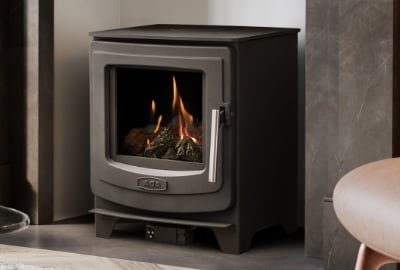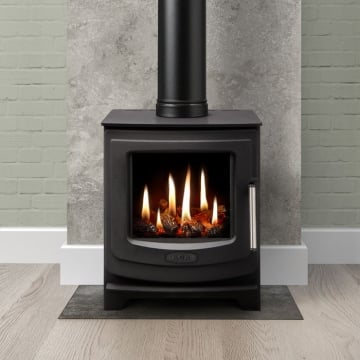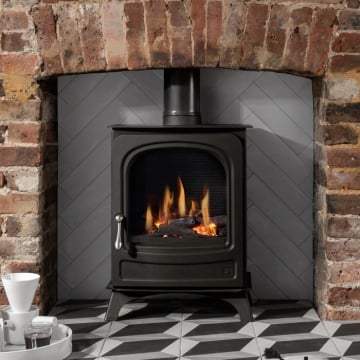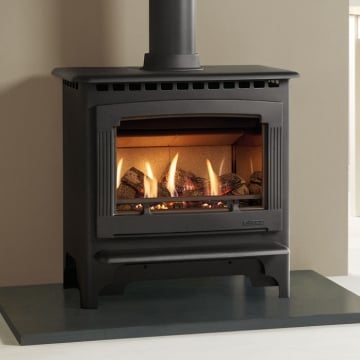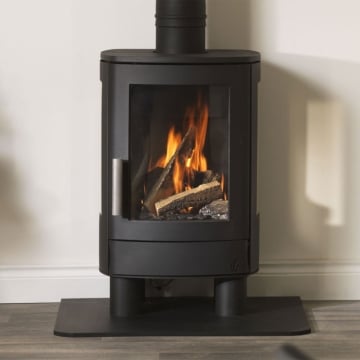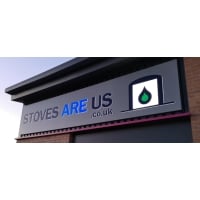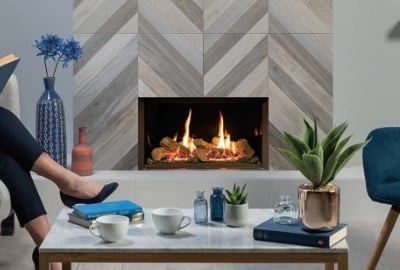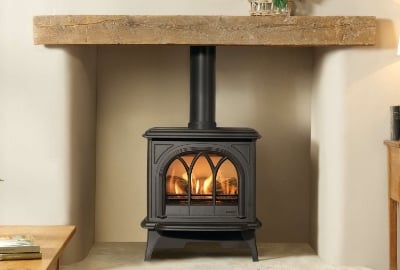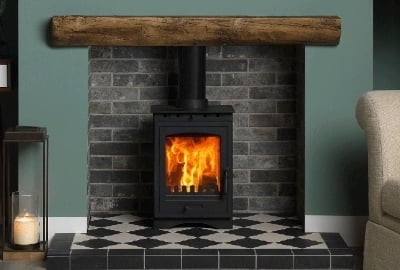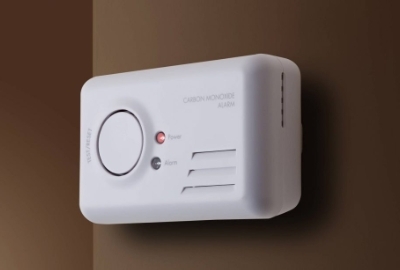If you like the idea of coming home to the cosy ambience of a real fire but don't have a working chimney an option for your home could be a balanced flue gas stove. When it comes to fitting a stove, especially a wood burner there can be a fair amount of work involved so having a freestanding balanced flue fire is a versatile option as these stoves can be fitted in virtually any home. A wood burner is a great option but there are lots of other potentially more convenient heating solutions including balanced flue fires, electric fireplaces and flueless gas stoves. In this guide, we’ll cover everything that you’ll need to know about buying a balanced flue gas stove and why they are such the number one choice for homes without a working brick flue.
Contents
What is a Balanced Flue Gas Stove?
Which Balanced Flue Gas Stove Should I Buy?
Can I install a Gas Stove Without a Chimney?
What are the Benefits of a Balanced Flue Stove?
What is the Difference Between a Balanced Flue and a Conventional Flue?
How Does a Balanced Flue Work?
What is a Balanced Flue Gas Stove?
Balanced flues are often associated with fireplaces and inset gas fires, but a balanced flue gas stove can bring a cosy ambience to your room with the classic aesthetic of a log burner.
Balanced flue gas stoves are designed to be freestanding and use gas as their fuel source which can be natural mains gas or LPG for some models. These stoves use a balanced flue pipe which is different to a normal vitreous enamel stove pipe that you see used with a conventional flue gas stove or a wood burner. The balanced flue is a twin wall pipe that allows air in and out of the appliance. The inner tube of the flue takes the exhaust and waste fumes outside your home whilst the outer tube pulls in fresh air which is required for the flame to burn.
A balanced flue is often vented from the rear of the appliance which is often installed against an external wall. You can install a balanced flue vertically through a ceiling but this is a less popular method. Your balanced flue stove is glass-fronted and fully room-sealed which means it doesn’t need to take air from the room, the waste gases are sent outside via the flue and this process minimises heat loss and increases efficiency.
Which Balanced Flue Gas Stove Should I Buy?
When it comes to balanced flue stoves there are plenty of options. We work with some of the best brands in the industry that produce the best most reliable and efficient gas-balanced flue stoves that are built to last. This selection of balanced flue gas stoves produces none of the ash and smoke associated with a log burner and they are also highly efficient, with less heat escaping up the chimney.
Can I install a Gas Stove Without a Chimney?
Yes, you absolutely can! For homes without a working chimney, many gas stoves are available as balanced flue models. Balanced flue models work in conjunction with glass-fronted designs that do not need to be installed within a masonry brick chimney. You'll need to buy the relevant balanced flue pipe work that is usually fitted through an external wall, it is easy to see why balanced flue stoves are so popular given the installation versatility a both modern & traditional styles available.
What are the Benefits of a Balanced Flue Stove?
The benefits of a balanced flue gas stove go on and on but one of the main reasons consumers are drawn to balanced flue stoves is their versatility. A balanced flue gas stove or fireplace can be installed almost anywhere in the home making them especially popular for new build homes that haven’t been fitted with a class one flue or masonry chimney.
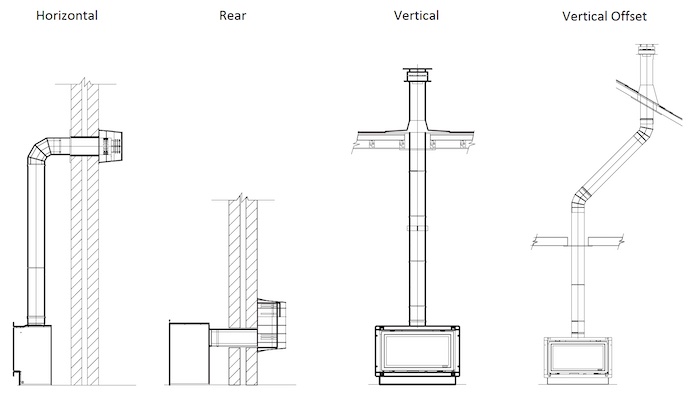
A balanced flue stove installation can be given a traditional fireplace design by constructing a faux chimney breast which adds a great deal of aesthetic and more so a focal point to the room. For a more contemporary style, you could opt for a built-in balanced flue gas fire also known as a media wall gas fireplace. Since your balanced flue fireplace has no chimney size restrictions the installation possibilities are endless, so get creative!
There are lots more positives to balanced flue gas stoves, we’ve mentioned that they are perfect for homes without chimneys but what are the other reasons you should choose a balanced flue gas stove for your home?
- Highly efficient - Balanced flue gas fires are much more efficient than open-fronted gas fires and can exceed the efficiency levels of wood burners. Balanced flue stoves generally sit at a 90% efficiency level as more heat is pushed into your room rather than lost up the chimney.
- Modern & traditional styles - With balanced flue fires you can opt for a classic or contemporary look with freestanding and hole-in-the-wall models to choose from.
- Simple to install - Did we mention versatility? A balanced flue can be fitted through almost any external wall and doesn’t need a class 1 flue or chimney. A balanced flue also eliminates the need for ventilation in your room because it is room-sealed (unlike lots of other gas fires).
- Glass fronted - Lots of traditional fireplaces and open gas fires are draughty and you’ll lose a lot of heat up the chimney, whereas balanced flue gas fires have a closed glass front. They keep much more heat in and keep your space warmer and more comfortable.
- High heat output - A balanced flue gas fire can produce heat outputs relative to that of a wood-burning stove. By choosing a gas-balanced flue fire you won’t be restricted if you have an open-plan living space or vaulted ceiling barn.
What is the Difference Between a Balanced Flue and a Conventional Flue?
If you’re in the market for a new gas fire, you might have come across the terms conventional flue and balanced flue. These two types of flues work in a very different way, here we’ll try to help you understand which might be more suitable for your home.
A conventional flue or chimney works with the natural circulation of heated air to remove the fumes from your gas fire up your chimney and out of your home. Conventional flue fires can come either open-fronted or glass-fronted but require air from the room for the fire to operate properly.
Balanced flue fires are sealed from the room and take the air for combustion via the twin-wall flue pipe. These fires are all glass-fronted, the air for combustion is drawn in through the outer pipe whilst the inner pipe removes the combustion gases outside of your property. The twin-walled balanced flue pipe may exit horizontally through an external wall or vertically through a ceiling and then your roof.
Overall, we feel that a balanced flue gas stove could be the heating solution for your home where many other options just aren’t possible. There are very few downsides to balanced flue fires but if we had to highlight one it would be that the initial cost of the fire is more expensive than electric stoves and conventional gas stoves. Balanced flue fires do offer lower running costs though, thanks to their high-efficiency ratings and lower cost per kW of fuel.

